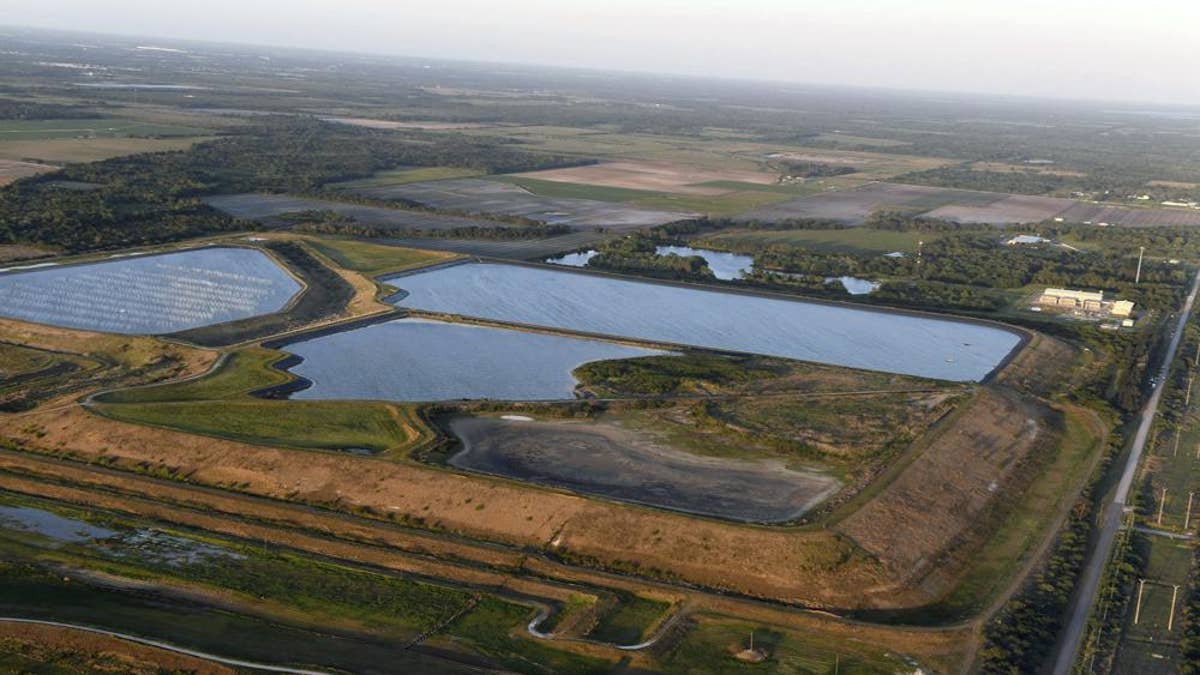Fox News Flash top headlines for September 28
Fox News Flash top headlines are here. Check out what's clicking on Foxnews.com.
The polluted leftovers of Florida’s phosphate fertilizer mining industry, more than 1 billion tons in "stacks" that resemble enormous ponds, are at risk for leaks or other contamination when Hurricane Ian comes ashore in the state, environmental groups say.
Florida has 24 such phosphogypsum stacks, most of them concentrated in mining areas in the central part of the state. About 30 million tons of this slightly radioactive waste is generated every year, according to the Florida Industrial and Phosphate Research Institute.
"A major storm event like the one we are bracing for can inundate the facilities with more water than the open-air ponds can handle," Ragan Whitlock, staff attorney for the Center for Biological Diversity environmental group, said in an email Tuesday.
HURRICANE IAN TRACKER, WARNINGS AND ADVISORIES
"We are extremely concerned about the potential impacts Hurricane Ian may have on phosphate facilities around the state," Whitlock added.
A leak in March 2021 at a stack called Piney Point resulted in the release of an estimated 215 million gallons of polluted water into Tampa Bay, causing massive fish kills. State officials, overseen by a court-appointed receiver, are working with a $100 million appropriation to shut down that long-troubled location.
"During the past six months, the receiver has made significant progress toward closing the facility," lawyers for Gov. Ron DeSantis said in a court filing Monday.

Florida environmental officials are worried that reservoirs containing phosphate at phosphate mines, or "stacks", pictured here in Brandonton, Florida, on April 3, 2021, may overflow due to Hurricane Ian and pollute the surrounding area. (Tiffany Tompkins/The Bradenton Herald via AP, File)
But the Center for Biological Diversity, which sued with other groups to close down Piney Point, noted that 4.5 million additional gallons of wastewater were released into Tampa Bay in August.
"The imminent and substantial endangerment to the environment and human health and safety posed by Piney Point has not been abated" since a judge ordered a six-month stay in the case.
Hurricane Ian is expected to make landfall in southwest Florida on Wednesday before cutting through the state — very close to many of the gypsum stacks.
State Department of Environmental Protection records show that Piney Point has about 24 inches (60 centimeters) of rainfall capacity. Another facility in the Tampa Bay area, operated by phosphate giant Mosaic Co., has just over 9 inches (22 centimeters) of rainfall capacity.
HURRICANE IAN TAKES AIM AT FLORIDA: WHAT TO KNOW ABOUT THE MAJOR STORM
A spill could seriously damage rivers and other wetlands near the stacks, according to Jim Tatum of the Our Santa Fe River nonprofit group.
"Valuable aquatic and vegetative resources never fully recover from a spill," Tatum wrote on the organization’s website. "As the highly acidic, radioactive slime makes its way to the receiving waters, entire aquatic ecosystems are impacted."


